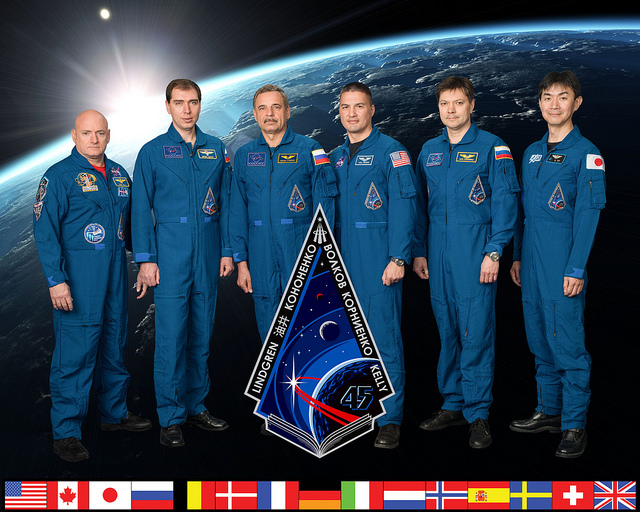
With the International Space Station (ISS) now back at six-person strength, following last week’s return to Earth of Soyuz TMA-16M and its crew of record-setting Russian cosmonaut Gennadi Padalka, Kazakhstan’s Aidyn Aimbetov and Denmark’s first astronaut, Andreas Mogensen, a key milestone will be passed today (Tuesday, 15 September) when Scott Kelly and Mikhail Kornienko officially pass the halfway mark of their (almost) year-long mission. Launched last 26/27 March, aboard Soyuz TMA-16M, alongside Padalka, the two men have now accrued 171 days in orbit and will hit 342 days—or almost 49 weeks—by the time they return to Earth with fellow cosmonaut Sergei Volkov on 2 March 2016. In doing so, Kelly and Kornienko will complete the first mission of close to a full year in duration ever attempted in the 21st century and will join a small cadre of only four other humans to have spent such an extreme period away from the Home Planet on a single voyage.
Passage of the halfway mark of their long mission comes only days after last Saturday’s safe return of Soyuz TMA-16M and Padalka, Mogensen and Aimbetov. Since Kelly and Kornienko will effectively spend the duration of two half-year increments aboard the ISS, and with Padalka always due to come home after a standard six months, it was recognized that a replacement crew member would be needed to join them for the second stage of their long voyage. As a consequence, Soyuz TMA-18M was tasked to deliver Russia’s Sergei Volkov—a veteran cosmonaut, with two long-duration missions already under his belt—to replace Padalka and form the “new” third member of Kelly and Kornienko’s crew. The opportunity was also taken to fly two other individuals for a short, ten-day “changeover” period, with Andreas Mogensen selected on behalf of the European Space Agency (ESA) and English soprano Sarah Brightman as a paying Spaceflight Participant (SFP). However, amid speculation of family and other issues, Brightman withdrew from training earlier in 2015 and was replaced in June by the third ethnic Kazakh cosmonaut, Aidyn Aimbetov.
With Soyuz TMA-18M scheduled to rise from Site 1/5 at the Baikonur Cosmodrome in Kazakhstan on 2 September, there already existed a pair of piloted vehicles—Soyuz TMA-16M, which delivered Padalka, Kelly and Kornienko in March, and Soyuz TMA-17M, which delivered their Expedition 44/45 crewmates Oleg Konenenko, Kjell Lindgren and Kimiya Yui on 22/23 July—at the international outpost. Soyuz TMA-16M was docked at the station’s space-facing (or “zenith”) Poisk module, whilst Soyuz TMA-17M occupied the Earth-facing (or “nadir”) Rassvet module, both of which project radially from the multiple docking adapter of the Zarya module. It is always preferable for long-duration piloted craft to occupy these radial-projecting ports, in order that the aft port of the Zvezda service module is free for unpiloted Progress vehicles to accomplish periodic reboosts of the station’s orbit through its longitudinal axis. However, with Zvezda aft having been vacated by Progress M-26M on 14 August and its next resident, Progress M-29M, not due to arrive until early October, the port was temporarily empty. Since Soyuz TMA-16M had spent the longest period aloft, and was due to return to Earth on 11/12 September, it was temporarily relocated in late August to the Zvezda aft interface, thereby retaining the Poisk/Rassvet radial ports for Soyuz TMA-17M and Soyuz TMA-18M and the ongoing long-duration crews.
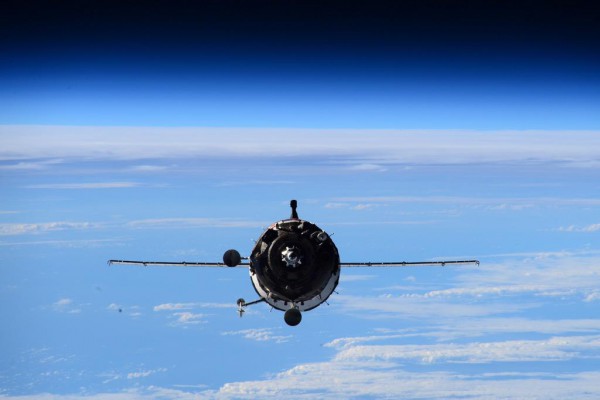
At length, Soyuz TMA-18M and its crew of Volkov, Mogensen and Aimbetov roared into orbit from Baikonur on 2 September. Unlike most previous missions, which typically follow a four-orbit “fast rendezvous”, lasting about six hours, theirs was required to revert to a longer, two-day approach regime, due to the ISS orbit having recently been raised in response to a Micrometeoroid Orbital Debris (MMOD) avoidance maneuver. “Because of the station’s higher altitude, reaching the weightless research facility is now more difficult,” ESA noted, “and Roscosmos decided to allow the Soyuz TMA-18M more time to rendezvous and dock.”
At length, the spacecraft docked smoothly at the Poisk module on 4 September and, after standard safety briefings, the crews pressed directly into their respective tasks, including Mogensen’s full plate of research experiments, primarily executed in Europe’s Columbus laboratory, as part of his “iriss” mission. The longer than anticipated transit time and shorter period aboard the ISS had necessitated significant replanning of his science program, which included tests of a new water-cleansing membrane, the demonstration of hands-free goggles, wearing a tight-fitting “Skin Suit” to alleviate astronaut back pain and telerobotically driving two rovers on Earth, as part of efforts to prepare for future deep-space exploration.
During the course of these joint operations—and with the ISS crew having expanded to nine members for the first time since November 2013—command of the station was handed over from the outgoing skipper, Gennadi Padalka, to his replacement, Scott Kelly. Padalka, who became the world’s most seasoned spacefarer on 28 June, when he surpassed fellow cosmonaut Sergei Krikalev’s cumulative 803-day career total, had also become the first human to command as many as four ISS expeditions. In taking command, and thus passing the torch from Padalka’s Expedition 44 to his own Expedition 45, Kelly also became the first U.S. astronaut to lead as many as two discrete ISS expeditions.
On 5 September, from within the voluminous expanse of Japan’s Kibo laboratory—the largest single ISS pressurized module—the nine astronauts and cosmonauts gathered for the customary change of command ceremony. With Padalka clad in a bright red shirt, the new Expedition 45 crew of Kelly, Kornienko, Volkov, Kononenko, Lindgren and Yui in navy shirts, Aimbetov in a sky-blue shirt, honoring the national flag of Kazakhstan, and Mogensen in a dark blue shirt, both incoming and outgoing commanders lauded the ISS as having provided them with an outstanding home and workplace. Padalka thanked Kelly and Kornienko for being on his crew and for working well together.
The last six months, clearly, did not run according to plan in many aspects, following the loss of Russia’s Progress M-27M cargo ship in April-May and the destruction of SpaceX’s CRS-7 Dragon on 28 June, the very same day that Padalka broke the record for the world’s most experienced spacefarer. These two losses came atop the failure of Orbital Sciences’ ORB-3 Cygnus cargo ship, last 28 October, which effectively put both of NASA’s Commercial Orbital Transportation Services (COTS) cargo providers out of service for a period of several months, as well as marking only the second outright failure of a Progress in more than 37 years of operations. Padalka noted, understatedly, that this was “not a good time” for the ISS, but stressed that his crew had responded by “giving space station a great operational condition”.
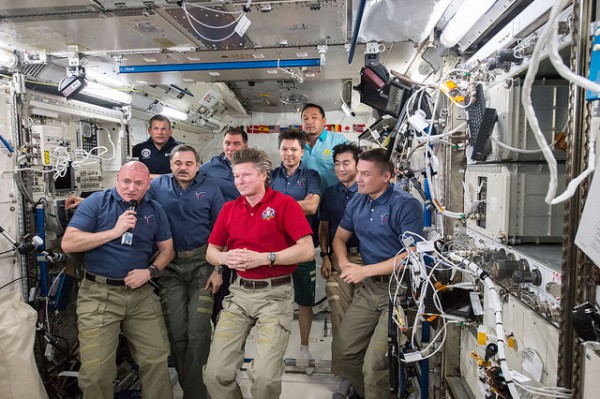
Thanking the various Mission Control Centers (MCCs) around the world, he expressed how much he was looking forward to seeing his crewmates on the ground, some sooner and—with a knowing grin and wave to Kelly—“some later”. Padalka then handed the microphone to Kelly, whose Navy background led him to describe the change of command ceremony as “a time-honored tradition”. He thanked his crewmates, but noted that they were “just the figurehead up here” and that “it takes a team to make this space station run”. He highlighted that he was “fortunate to have the wisdom and experience” of a previous ISS command, as well as “a leader like Gennadi to learn from and to see how I could do this job better the second time”. Kelly then briefly passed the microphone back to Padalka, who—in just a few words—officially ended his post as Expedition 44 Commander. “I am ready to relinquish command to Scott Kelly,” he said, before the oft-transferred microphone went back to the hands of the new Expedition 45 Commander. “And I assume command of the International Space Station,” Kelly began, “a great ship and one that not only serves us very well, but serves our various countries very well.”
Less than a week later, on the late evening of 11 September, Padalka, Mogensen and Aimbetov boarded Soyuz TMA-16M and undocked from the Zvezda aft port, touching down in central Kazakhstan about three hours later. In doing so, Padalka accrued a total of 878 days, 11 hours and 31 minutes—or about 2.4 years of his life—in space, spread across five long-duration missions to the ISS and to Russia’s Mir space station. Completing their first flights, Mogensen and Aimbetov each spent nine days, 20 hours and 14 minutes aloft.
With Expedition 45 under Kelly’s command, he and Kornienko today officially enter the second half of their (almost) year-long mission, which is due to conclude with the landing of Soyuz TMA-18M on 2 March 2016. In total, they will have spent 342 days in orbit, whilst Volkov—who will join them for the return journey—will have added 182 days to his own tally of long-duration ISS experience. Rounding out Expedition 45 are Kononenko, Lindgren and Yui, who today pass their 55th day aboard the orbital outpost. They become the first long-duration crew of the ISS era in which none of its members will rotate to command the next consecutive expedition, with Soyuz TMA-16M’s Padalka and Kelly having led both the first and second halves of their increment.
The remainder of Expedition 45 carries much promise, despite the loss of SpaceX’s CRS-7 Dragon in June and the destruction of the critical first International Docking Adapter (IDA-1) for Commercial Crew support. Original plans called for IDA-1 to be robotically installed onto the Pressurized Mating Adapter (PMA)-2 interface at the forward port of the Harmony node, after which Kelly and Lindgren would have supported an EVA in August to hook up power and data cables and associated utilities. The loss of IDA-1 threw many of those plans into disarray, such that the second adapter—IDA-2, previously manifested aboard SpaceX’s CRS-9 Dragon and scheduled for launch in September—will likely not reach space until early 2016 at the soonest. Despite several reports that the CRS-8 mission, carrying the Bigelow Expandable Activity Module (BEAM), might be in a position to launch as soon as mid-November, SpaceX has previously told AmericaSpace that no decisions have been made and that the Hawthorne, Calif.-based launch services company is “still a ways from locking in exact dates/manifest”.
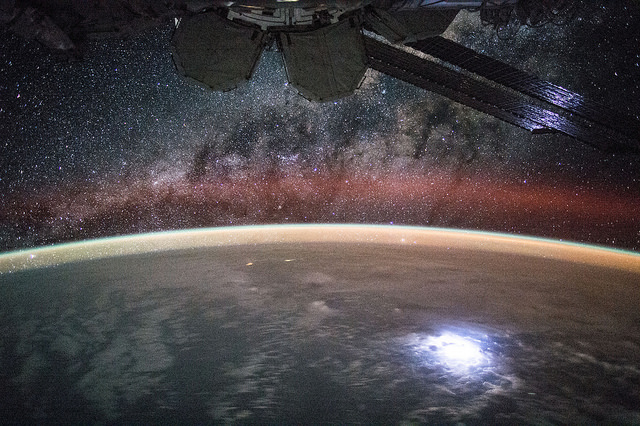
Originally planned to serve as a backup Commercial Crew docking port, affixed to the Pressurized Mating Adapter (PMA)-3 at the space-facing (or “zenith”) interface of Harmony, IDA-2 will likely now be retasked as the “new” primary port at PMA-2. It is understood that a replacement adapter, known as IDA-3, is being fabricated from structural spares, although the launch date for this “new” backup port remains unclear.
At present, PMA-3 is situated at the port-facing “end” of the Tranquility node, a position it has occupied for more than five years. Launched aboard shuttle Discovery on STS-92 in October 2000, PMA-3 was originally installed on the Earth-facing (or “nadir”) interface of the Unity node and, a few weeks later, in early December, it supported the docking of shuttle Endeavour on STS-97. PMA-3 was used on only one more occasion for a shuttle docking, when it supported the arrival of Atlantis on STS-98 in February 2001. Subsequently, it was robotically relocated by the STS-102 crew in March 2001 from the nadir to the port side of Unity, in order to permit the temporary installation of the Leonardo Multi-Purpose Logistics Module (MPLM). With the rapid expansion of the ISS, and the addition of new pressurized modules, PMA-3 was moved back to the Unity nadir port in August 2007, ahead of the arrival of the Harmony node on STS-120, and in early 2009 returned again to Unity nadir. Its most substantial move, however, came in January 2010, when it was transferred from Unity to a temporary spot on the zenith interface of Harmony, where it waited for the arrival of the Tranquility node. During the course of the STS-130 mission in February 2010, PMA-3 was moved to its current position at the port-facing end of the new node. It was noted by NASA that this position would “provide an additional docking port for visiting spacecraft, as well as provide additional debris shielding for Tranquility”.
With Commercial Crew now on the horizon, PMA-3 was originally planned to move again in October 2015, being robotically detached from Tranquility and transferred for the second time in its 15-year operational lifetime to the zenith interface of Harmony. However, according to NASA’s Rob Navias, the PMA-3 relocation has been indefinitely delayed and the planned EVA by Kelly and Lindgren to hook up utilities and cables has also been canceled. “There will be no PMA-3 relocation in the near future since IDA-3 doesn’t exist yet,” he told AmericaSpace, “and the Program decided to put it on indefinite hold.” That said, the pair will still conduct a pair of EVAs on 28 October and 6 November, for a wide range of other ISS maintenance and get-ahead tasks.
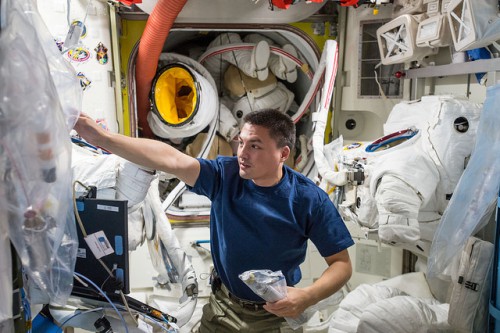
For the first excursion (U.S. EVA-32) on 28 October, Kelly and Lindgren—both first-time spacewalkers—are tasked with myriad activities. They will install a thermal cover onto the Alpha Magnetic Spectrometer (AMS), which resides at the Upper Inboard Payload Attach Site on the S-3 element of the starboard-side Integrated Truss Structure (ITS), and tie down some Multi-Layered Insulation (MLI) on a 220-pound (100 kg) Main Bus Switching Unit (MBSU). Four MBSUs act as distribution hubs for the station’s Electrical Power System (EPS), whilst the unit to be tended by Kelly and Lindgren was delivered to the ISS as a replacement spare aboard Japan’s HTV-4 Kounotori cargo ship in August 2013 and is located on a Flight Releasable Attach Mechanism (FRAM) on the ExPRESS Logistics Carrier (ELC)-2 at the interface between the S-3 and S-1 truss segments. “We just want to tie it down so that the [Mobile Base System of Canadarm2] has a clear path for movement,” Mr. Navias told AmericaSpace.
In addition to their work on the AMS and MBSU tasks, Kelly and Lindgren will perform lubrication work on the Latching End Effector (LEE) of the 57.7-foot-long (17.6-meter) Canadarm2 robotic arm, which was previously tended by Expedition 42 spacewalker Terry Virts during U.S. EVA-30 in February 2015. They will also install a Non-Propulsive Valve (NPV) onto the exterior of the United States’ Destiny laboratory and begin the process of routing cables in anticipation for the PMA-3/IDA-3 installation at some point in the future. Labeled as an “ISS Upgrades EVA”, Mr. Navias told AmericaSpace that EVA-32 will see Kelly as “EV1”, with red stripes on the legs of his Extravehicular Mobility Unit (EMU) space suit for identification, and Lindgren in a pure-white suit as “EV2”.
A week later, on U.S. EVA-33, the spacewalkers will switch roles, with Lindgren assuming the EV1 role and Kelly serving as EV2 on the United States’ fifth spacewalk of 2015, following on the heels of the trio of EVAs performed by Expedition 42 astronauts Barry “Butch” Wilmore and Terry Virts in the February-March timeframe to prepare the station’s U.S. Orbital Segment (USOS) for Commercial Crew, the IDA installations and the PMA-3 relocation. The primary objective of EVA-33 can trace its ancestry back to November 2012, when Expedition 33 spacewalkers Suni Williams and Aki Hoshide attempted to isolate an ammonia leak in the cooling system of the P-6 port-side element of the ITS. It was speculated at the time that the leak possibly arose following an MMOD strike to its Photovoltaic Radiator (PVR) or perhaps age-induced cracking, but by mid-2012 the leak had increased to 5.2 pounds (2.4 kg) per year, which represented about 10 percent of P-6’s original ammonia load. This, in turn, raised the alarming risk that the critical 2B power channel—which carries major electrical loads across the whole ISS—could have been forced to shut down before the end of 2012.
Williams and Hoshide’s EVA isolated the 2B coolant loop and used the Trailing Thermal Control Radiator (TTCR) for subsequent cooling, allowing engineers to pinpoint the exact location of the ammonia leak. However, six months later, in May 2013, ammonia “snow” was seen emanating from the 2B power channel, which necessitated a contingency EVA by Expedition 35 spacewalkers Chris Cassidy and Tom Marshburn. The pair were unable to locate the source of the leakage, but removed, replaced and tested a suspect Pump Flow Control Subassembly (PFCS), which was expected to yield additional clues for investigators in their search for a solution. More than two years later, Kelly and Lindgren’s task on U.S. EVA-33 will be “to restore the P-6 truss cooling system to the original state it was in prior to the Williams/Hoshide EVA”. Mr. Navias noted that no timelines are available yet with regard to U.S. EVAs 32 and 33.
Dovetailed into the U.S. EVA manifest, Japan’s H-II Transfer Vehicle (HTV)-5 Kounotori (“White Stork”) cargo ship is expected to be robotically unberthed from Harmony’s nadir interface and depart the station on 28 September, after which Russia’s Progress M-29M will arrive on 1/2 October and dock at the Zvezda aft port. Another Russian cargo craft, Progress M-28M—which has been docked at the Pirs module since early July—will depart on 19 November, to be replaced a few days later by the first flight of a new vessel, Progress-MS. Orbital Sciences is expected to launch its next Cygnus cargo mission, ORB-4, no sooner than 4 December, atop a United Launch Alliance (ULA) Atlas V 401 booster from Cape Canaveral Air Force Station.
In the meantime, Kelly and Kornienko will press on with the second half of their long mission. As detailed recently by NASA, the two men have focused on a series of scientific and biomedical experiments, with a focus upon seven key areas of human research: functional, behavioral health, visual impairment, metabolic, physical performance, microbial and Human Factors. Described as “one of the most ambitious studies undertaken so far”, Fluid Shifts—which forms part of the visual impairment group of experiments—investigates the process of fluid shifting into astronauts’ upper bodies when exposed to weightlessness. “This shift may cause changes in vision through increased intracranial pressure and is a major issue that scientists are looking to resolve before humans being exploring beyond Earth’s orbit,” NASA reported. “The study uses the Russian Chibis device to draw fluids back into the legs, while measurements of the subject’s eyes are taken to track any changes. NASA and Roscosmos are already looking at continuing the Fluid Shifts investigation with future space station crews, beyond the one-year mission.”
For the second time in 2015, a “direct rotation” of crew members will take place just prior to Christmas, with Soyuz TMA-19M expected to launch from Baikonur on 15 December, carrying Russian cosmonaut Yuri Malenchenko, NASA astronaut Tim Kopra and Britain’s Tim Peake. This will boost the Expedition 45 crew up to nine members. A second direct handover of crews was not originally planned for 2015, but was added in order to maximize the time spent in orbit by Soyuz TMA-17M’s Kononenko, Lindgren and Yui, the beginning of whose six-month flight was postponed from May to July, and whose landing date is being correspondingly extended from 5 November to 22 December. In anticipation of the Soyuz TMA-19M arrival, Kononenko, Lindgren and Yui will relocate their Soyuz TMA-17M spacecraft to the Zvezda aft port, opening up Rassvet for the new arrivals. Soyuz TMA-17M will then return to Earth three days before Christmas, marking the dawn of Expedition 46—also under Kelly’s command—which will run through the end of the (almost) one-year mission on 2 March 2016.
Want to keep up-to-date with all things space? Be sure to “Like” AmericaSpace on Facebook and follow us on Twitter: @AmericaSpace
Missions » ISS » Soyuz TMA-M » Missions » ISS » Soyuz TMA-M » TMA-16M » Missions » ISS » Soyuz TMA-M » TMA-17M »



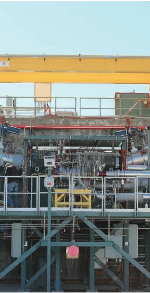
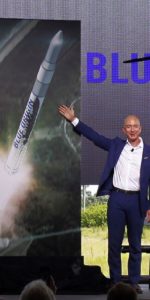
3 Comments
3 Pings & Trackbacks
Pingback:Russia’s Second Six-Time Cosmonaut and ‘Two Tims’ Set for December Launch to Space Station « AmericaSpace
Pingback:New Space Station Crew Ready for Six Months of Visitors and EVAs « AmericaSpace
Pingback:Into the Homestretch: Kelly and Kornienko to Pass 300 Days in Space, Heading for 2 March Return to Earth « AmericaSpace